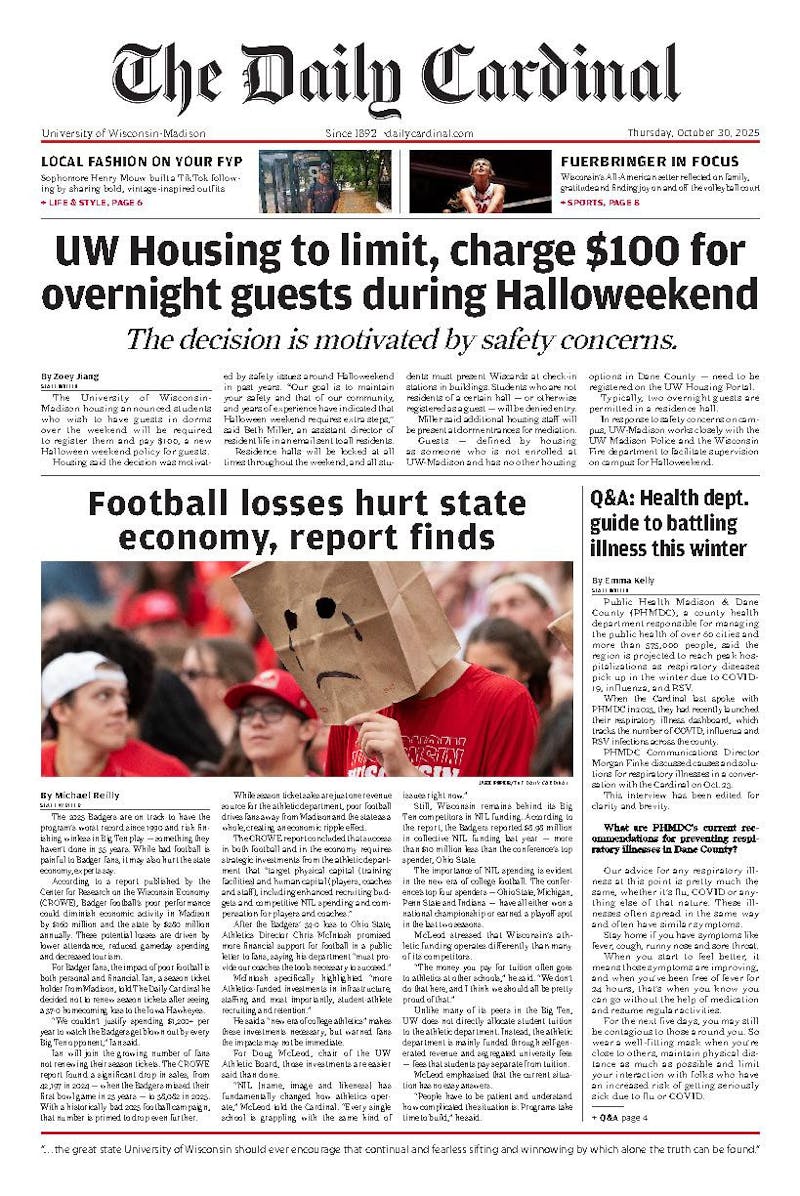Beginning in 1991, state funding as a percentage of UW-Madison's budget has been decreasing at a level one university official describes as \serious.""
And with Tuesday's announcement by Gov. Scott McCallum that the UW System must cut $50.5 million within the next two years due to Wisconsin's $1.1 billion deficit, this downward trend seems likely to continue.
According to the 2000-'01 UW-Madison Annual Report, in 1991 state funding accounted for approximately 33 percent of university funding sources. By 2001, it accounted for a little more than 25 percent.
While the actual dollar amount of state support has increased overall since 1990, the increases have been rather small, according to John Torphy, UW-Madison vice chancellor for administration. Those increases were made to cover expenses such as pay increases already approved by the state, he said. New programs have generally not been funded by state appropriations. After McCallum's speech Tuesday, for example, funding for the Madison Initiative, a plan designed to better the overall quality of the university by improving faculty, increasing financial aid, renovating buildings and enhancing technology, may be cut by up to 40 percent, according to UW-Madison Chancellor John Wiley.
Making up for shortfalls in state funding, other sources of support'specifically, private gifts and federal research grants'have increased in the past decade. In 1991, according to the Annual Report, about 14 percent of UW-Madison's funding came from gifts. In 2001, the percentage had increased to about 18 percent. Tuition has also increased, but at a less drastic rate.
Susan Trebach, a spokesperson for the UW System, said it was difficult to explain the downward trend in state funding.
""I can't get into the minds of the people who make these decisions,"" she said. ""I can only say that there are, in every biennium, in every budget, competing choices and competing needs. And over the decades, the university's needs have been addressed, but just historically as a smaller percentage of the budget than it used to be.""
In general, UW-Madison's trends of funding during the past decade are parallel to that of the entire UW System.
According to Torphy, the fiscal years of 1995-'96 and 1996-'97 and their ""major budget cuts"" presented many difficulties. The actual state funding decreased from $333,997,065 in 1994-'95 to $327,381,439 in 1995-'96.
He said he expected the ""serious"" decreasing trend to continue for a while, especially in light of recent budget woes, but he said he also hoped percentages would level off once the economy has improved.
""It's frustrating in the sense that I'd like [the numbers] to increase,"" he said. ""I found it frustrating to deal with the things during the 1990s. There were things we wanted to do that we couldn't do.\





